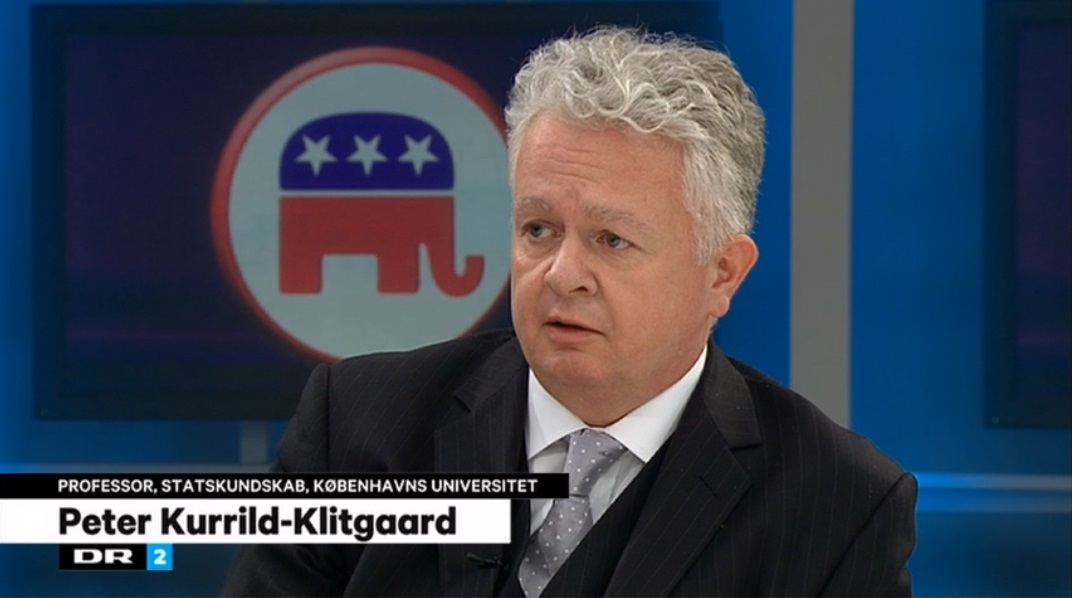- Economic growth: Developments in real disposable income since the previous midterm election (presumed to be positive for the candidate);
- "The cost of ruling": A composite measure balancing a) the number of terms a party has held the presidency (presumed to be negative), but also considering b) whether the candidate is an incumbent (presumed to be positive);
- Presidential approval: The incumbent president's positive approval ratings (presumed to be positive).
- Constant: 40.22
- Economic Growth: 1.95
- Cost of Ruling: -1.52
- Presidential approval: 0.12
The explanatory power of the three variables together is quite strong, explaining 87% of the variation in the two-party vote 1952-2012.
In particular, there is the familiar picture of economic conditions playing a large role--here the correlation between economic growth and incumbent party's share of two-party vote when controlling for other factors:
Plugging in the relevant data for 2016 (3.3 pct. average quarterly growth up to and including 2Q of 2016, given that we do not yet know 3Q; 51.3% approval rating for Obama, using RealClearPolitics.com's averages), we get that the Democratic candidate for president (Hillary Clinton) should get ... (drum roll) ... 49.99% of the two-party vote.
Essentially this is as close to a coin toss as possible--although it should be noted that such a use for "prediction" comes with a caveat: In this case the standard error of the estimate (when applied to the 1948-2012 elections) is at 2.28%.
What this means is that the election--in the eyes of the model--should look so extremely close at the national level (disregarding the issue of the Electoral College votes) that we really cannot say who is going to win. In fact, we should not be surprised by a relatively narrow win in the national vote (with, say, a 2 pct.point margin) for either of the candidates.
This is not really what the opinion polls, the forecasting models and prediction markets suggest and have suggested all year (namely a relatively clear Clinton victory). However, it does match the tendency in the last weeks of the presidential campaign for the national polls to tighten rather visibly.
If there was a modern presidential campaign where "the ground game" ("get out the vote"-operations) and voter enthusiasm/lack thereof might play a role, this could very well be it.
If on Tuesday Clinton ends up winning more like the opinion polls suggest than what econometric models such as the present one tends to forecast, then the "credit" might very well go to the Republicans and their candidate.





Ingen kommentarer:
Send en kommentar